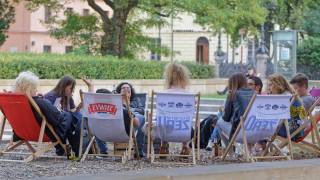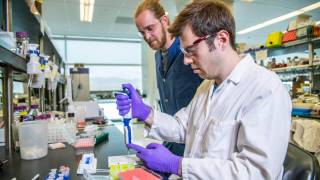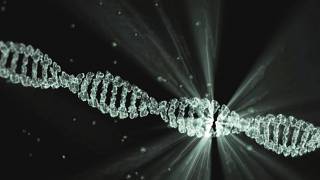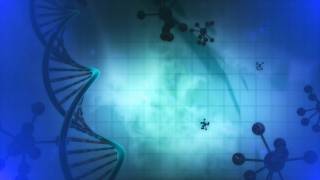What Causes Sudden Herpes Virus Outbreaks?

University of Virginia (UVA) researchers have offered new insights on what causes herpes simplex virus (HSV-1) to flare up, explaining how stress, illness, and even sunburn can trigger unwanted outbreaks.
These researchers identified HSV-1 co-opts an innate immune pathway resulting from IL-1 stimulation of neurons to induce reactivation.
The discovery could lead to new ways to prevent cold sores and recurrent herpes-related eye disease from reoccurring, the researchers reported on February 11, 2021
“Herpes simplex recurrence has long been associated with stress, fever, and sunburn,” said researcher Anna R. Cliffe, of UVA’s Department of Microbiology, Immunology, and Cancer Biology, in a press statement.
Once infected with HSV, the virus never really goes away. Instead, it lurks inside neurons, waiting for the right moment to strike again, a process known as reactivation, added Dr. Cliffe.
Cliffe and her collaborators found that when neurons harboring the virus were exposed to stimuli that induce “neuronal hyperexcitation,” the virus senses this particular change and seizes its opportunity to reactivate.
In response to prolonged periods of inflammation or stress, the immune system releases a particular cytokine, Interleukin 1 beta.
This cytokine is also present in epithelial cells in the skin and eye and is released when these cells are damaged by ultraviolet light.
Interleukin 1 beta then increases the excitability in the affected neurons, setting the HSV stage to flare up, the UVA researchers discovered.
“It is remarkable that the virus has hijacked this pathway that is part of our body’s immune response,” Cliffe said. “It highlights how some viruses have evolved to take advantage of what should be part of our infection-fighting machinery.”
These UVA researchers demonstrate HSV-1 reactivation from latently infected mouse neurons induced by forskolin requires neuronal excitation. Stimuli that directly cause neurons to become hyperexcitable also induced HSV-1 reactivation.
Forskolin-induced reactivation was dependent on the neuronal pathway of DLK/JNK activation. It included an initial wave of viral gene expression independent of histone demethylase activity and linked to histone phosphorylation.
IL-1β is released under conditions of stress, fever, and UV exposure of the epidermis, all known triggers of clinical HSV reactivation.
They found that IL-1β induced histone phosphorylation and increased sympathetic neurons’ excitation. Importantly, IL-1β triggered HSV-1 reactivation, which was dependent on DLK and neuronal excitability.
The scientists say that more research is needed to fully understand the potential factors which play into herpes simplex disease. It may vary depending on the virus strain or the type of neuron infected.
“A better understanding of what causes HSV to reactivate in response to a stimulus is needed to develop novel therapeutics,” Cliffe said. “Ultimately, what we hope to do is target the latent virus itself and make it unresponsive to stimuli such as Interleukin 1 beta.”
Herpes simplex virus-1 (HSV-1) is one of the most common human pathogens present in approximately 40–90% of the population worldwide. Cold sores, also known as fever blisters, are among the most common symptoms of HSV reactivation.
HSV-1 is mainly transmitted by oral-to-oral contact to cause oral herpes and cause genital herpes. Herpes infections are most contagious when symptoms are present but can still be transmitted to others in the absence of symptoms, says the World Health Organization.
However, recurrent reactivation can lead to herpes keratitis - a severe eye disease which, if left untreated, can result in blindness. In extreme cases the virus can cause encephalitis.
The development of protective HSV vaccines has been an ongoing challenge for decades. Many vaccine candidates are under development, including DNA, modified mRNA, protein subunit, killed virus, and attenuated live virus vaccines.
Early-stage clinical trials to test therapeutic (intended to reduce viral shedding in people who are already infected with HSV) and preventive (designed to prevent infection) vaccine candidates are ongoing.
The researchers have published their findings in the scientific journal eLife. The research team consisted of Sean R. Cuddy, Austin R. Schinlever, Sara Dochnal, Philip V. Seegren, Jon Suzich, Parijat Kundu, Taylor K. Downs, Mina Farah, Bimal N. Desai, Chris Boutell, and Cliffe.
The work was supported by the National Institutes of Health’s National Institute of Neurological Disorder and Stroke, grant R01NS105630; the National Institute of Allergy and Infectious Diseases, and others.
No industry conflicts of interest were disclosed.
PrecisionVaccinations publishes research-based herpes virus vaccine news.
Our Trust Standards: Medical Advisory Committee

























